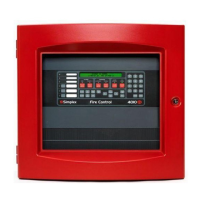Ch. 1. Basic Concepts and Operations - - - - - - - - - - - - - - - - - - - - - - - - - 1-1
Introduction............................................................................................................................ 1-1
In this Chapter ....................................................................................................................... 1-1
Basic System Description. . . . . . . . . . . . . . . . . . . . . . . . . . . . . . . . . . . . . . . . . . . . . . . . . 1-2
Overview................................................................................................................................ 1-2
Normal Appearance of Operator Interface Panel . . . . . . . . . . . . . . . . . . . . . . . . . . . . . . 1-4
Description............................................................................................................................. 1-4
Ch. 2. Alarm Conditions - - - - - - - - - - - - - - - - - - - - - - - - - - - - - - - - - - - - 2-1
Introduction............................................................................................................................ 2-1
In this Chapter ....................................................................................................................... 2-1
Acknowledging an Alarm . . . . . . . . . . . . . . . . . . . . . . . . . . . . . . . . . . . . . . . . . . . . . . . . . 2-2
How the 4010ES Indicates that an Alarm has Occurred ....................................................... 2-2
Overview - Acknowledging Alarms........................................................................................ 2-2
Globally Acknowledging Alarms ............................................................................................ 2-3
Individually Acknowledging Alarms ....................................................................................... 2-3
Silencing an Alarm. . . . . . . . . . . . . . . . . . . . . . . . . . . . . . . . . . . . . . . . . . . . . . . . . . . . . . .2-5
Overview................................................................................................................................ 2-5
Using the Alarm Silence Key ................................................................................................. 2-5
Resetting the System . . . . . . . . . . . . . . . . . . . . . . . . . . . . . . . . . . . . . . . . . . . . . . . . . . . . 2-6
Overview................................................................................................................................ 2-6
Resetting a System with Active Alarms................................................................................. 2-6
Performing a Hardware Reset............................................................................................... 2-7
Disabling a Point that Remains in Alarm. . . . . . . . . . . . . . . . . . . . . . . . . . . . . . . . . . . . . 2-8
Overview................................................................................................................................ 2-8
Important Notes..................................................................................................................... 2-8
Procedure.............................................................................................................................. 2-8
Ch. 3. Trouble Conditions- - - - - - - - - - - - - - - - - - - - - - - - - - - - - - - - - - - 3-1
Introduction............................................................................................................................ 3-1
In this Chapter ....................................................................................................................... 3-1
Overview. . . . . . . . . . . . . . . . . . . . . . . . . . . . . . . . . . . . . . . . . . . . . . . . . . . . . . . . . . . . . . . 3-2
How the 4010ES Indicates the Presence of a Trouble.......................................................... 3-2
What Acknowledge Does ......................................................................................................3-2
Global Versus Individual Acknowledge ................................................................................. 3-2
Trouble Indications for TrueAlarm Sensors ...........................................................................3-3
What to do when TrueAlarm Troubles Occur ........................................................................ 3-3
Table of Contents

